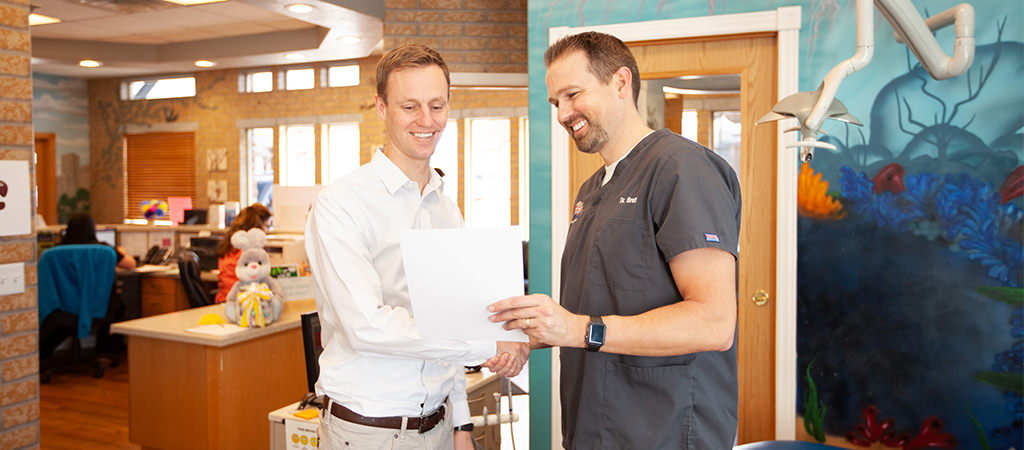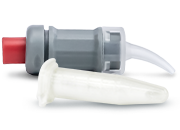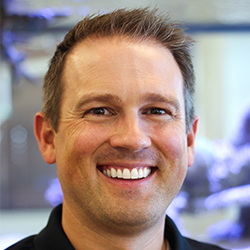
How I Transitioned From Pediatric Resident to Attending
I still remember the emotions of excitement and nervousness as a dental student, exploring a number of pediatric dental programs and struggling over a decision of which ones would be best to apply to. I vividly remember the morning when the “match” was announced. What a feeling of relief when I discovered I had been accepted to the program of my choice at Primary Children’s Hospital in Salt Lake City—my hometown.
Since the program was hospital-based with only three residents, we enjoyed the opportunity of frequent hands-on training. This was a huge benefit and enabled me to treat over 200 children in an operating-room setting, improving my skills and speed. This also helped me to make the transition to private practice more smoothly.
One of my favorite things about my residency training was working with multiple private practice attendings who shared their experiences “in the trenches.” Interacting with them, I found that there are many ways to be a successful pediatric dentist, including both the behavior management options we adopt and the treatment techniques we utilize. It was awesome to learn from each attending and then create my own style and employ my own methods that have allowed me to experience excellent outcomes with my little patients.
Shortly after finishing my training, I recall my decision to apply to be an attending dentist in the very program I had recently completed. My goal was to provide just as amazing an experience for the current residents as my attendings had given to me. And now, on the other side of this full circle—having become a private-practice attending dentist myself—I not only enjoy teaching and learning alongside our residents, but I also view them as potential associates in my own practice and future colleagues in this amazing specialty.
Why Choosing a Hospital-based or School-based Residency Matters
Choosing what residencies to apply to can be a daunting task. You face so many important decisions. Will it be a hospital-based program or a school-based program? Will it emphasize strong clinical training or give preference to strong research and educational components?
Some of us are “hands on” learners and thrive in a clinical setting, while others learn best through a deeper understanding of the principles and concepts taught in a classroom or research environment. Sometimes you may not realize what your learning style is, or which type of program will benefit you the most until you interview and see if a specific program appears to be a good fit for you.
Hospital-based programs typically have a very strong clinical component due to higher patient counts and less time spent in educational settings such as classrooms or research labs. All residency programs will be required to provide a certain amount of education and research in order to prepare residents for their pediatric dental boards.
A school-based program very often has a strong academic and research component but may dedicate less time to the clinical side of training. Once again, all training programs meet minimal requirements for providing clinical experience. Thus, all residents will receive the training needed to pass their boards regardless of the type of program they choose.
In fact, many programs provide a combined emphasis on both clinical experience and education, providing access to hospital dentistry as well as the school-based classroom setting. For many residents, this combination provides the best of both worlds.
Other Criteria for Choosing a Residency Program
Finding a program that is never complacent and always looking to improve their residents’ clinical abilities is one of the key factors to consider when choosing where to apply. Look for a program that emphasizes new technology and high exposure to many dental materials and current, cutting-edge techniques.
Currently at Primary Children’s Hospital, each resident treats over 200 patients in the operating room during their two-year residency. Many of these cases have severe early childhood caries which involve all four maxillary incisors. Nearly every one of those cases is treated with Zirconia crowns, and our residents finish their training very proficient in placing these crowns. This competency will be a huge asset as they transition to private practice.
Residents also receive extensive training in four different areas of sedation: nitrous oxide, oral sedation, IV sedation, and general anesthesia. This training is invaluable as it enables a resident to better understand patient management in each area. Residents are also trained to develop treatment plans for patients that will ensure the safest and most successful approach to treatment.


A MESSAGE FROM THE PROGRAM DIRECTOR
Hans C. Reinemer, DMD, Ms at Primary Children’s Hospital, Salt Lake City, Utah.
As director of the pediatric dental residency program at Primary Children’s Hospital in Salt Lake City, my goal is to provide our residents with an exceptional clinical experience in all aspects of the specialty. We introduce residents to the practice of restorative dentistry, utilizing the latest techniques and materials for the treatment of early childhood caries. Although we continue to teach and practice evidence-based dentistry, we also recognize that new materials and methods are changing the face of pediatric dentistry. This training intentionally includes experience in the use of a variety of composites, RMGI’s, bioactive restorative materials and cements, MTA for pulpal therapy, and the placement of Zirconia crowns.
In our program, we treat large numbers of children presenting with a great variety of conditions and we have the option of treating them in different ways. Exposure to the future-altering advances in pediatric restorative dentistry is vitally important for the modern training of all residents. In harmony with this belief, we encourage all of our residents to gain experience in using the most up-to-date treatment methods and materials in order to better prepare them for their transition into private practice.
Before attending my pediatric dental residency, I had been practicing as a general dentist for several years. In addition to the enjoyment I experienced while working with kids, I decided to take additional residency training for two basic reasons. My first reason was I wanted to become familiar with the most current research data so that I could make evidence-based recommendations for the patients I treated. The second reason was that I wanted to offer the most up-to-date treatment alternatives which I would learn about through extensive clinical experience at an institution that was providing cutting-edge treatment options.
The Primary Children’s Hospital pediatric dental residency program in Salt Lake City provided me the opportunity to reach both of these objectives. The residents in this hospital-based program gain extensive clinical experience in all sedation methods and a variety of restorative options. Our experience in restorations included training in the use of a variety of composite and RMGI restorative materials, bioactive restorative materials and cements, MTA for pulpal therapy as well as the restoration of primary teeth with pre-veneered stainless steel crowns and Zirconia crowns.
As a former practice owner, I cannot overstate the value of a dentist being prepared for private practice, trained in all facets of modern dentistry. Being ready to “hit the ground running” gives me a definite edge over other graduating residents who may not have experienced the same level of practical training.
Andy Ingersoll, DDS
Resident, Primary Children’s Hospital
Another strength of our residency program is that it provides an opportunity for our residents to come to private dental offices and observe how their attending dentists actually run their own practices. During these “shadowing” days, residents learn practical tips about marketing, practice flow, management style, behavioral management, and many other things that make each practice unique and successful. When I was a resident in this program, my “shadowing” experience provided some of the most memorable and enjoyable times of my training.
Other important items to consider when choosing a residency program include the following. Where is the program located? What is the call schedule like? Is a stipend provided? But have you ever considered what it will be like at the end of your training and what your future employer may be looking for?
What Offices Look for When Hiring a New Associate
Typically, private practice pediatric dental offices are fast paced, seeing a high volume of patients. When a new associate arrives, a transition period is always necessary. During this time, a newcomer adjusts to the flow of the practice and works on getting up to speed. If the new associate received a lot of experience working with a variety of patients during residency, then that transition is usually much smoother for both the practice and the new dentist. It is also a huge positive if a new associate has been trained using multiple sedation options and is proficient in using a variety of materials. When this is the case, a new associate’s experience adapting to a new practice environment is much easier.
One of the more important things I have found over the years when hiring new associates is the ability of the new dentist to integrate quickly into my practice. This requires high-level clinical skills and familiarity with or expertise in both the latest dental materials and the newest technology.
For example, in my practice the ability to place Zirconia crowns is paramount. I have had associates who only learned strip crowns in their residency programs. As a result, we had to train them how to use a new technique when seating Zirconia crowns. Due to this deficiency in their residency training, the transition was slow. It required increased treatment times for the patients which, in many ways, increased their cost, particularly if treatment was provided under sedation. As a result, the practice was less productive during such a transition time.
On the other hand, we have had associates hit the ground running because their residency training included experience using these crowns. The practice never skipped a beat. If a new associate has trained with Zirconia crowns in residency, that is a huge benefit to both them and to my practice.
At times, we have had such well-trained associates that they are qualified to teach both doctors and assistants the latest techniques they learned in residency. We have benefited from their instruction in the use of such items as Isodry, SDF, and the Hall technique with stainless steel crowns.
Many times, recent graduates have had experience with different oral sedation regimens that they have shared with us, helping us improve or modify our current practice. When well-prepared new associates join our practice, their arrival provides us with great learning opportunities. They have just been exposed to much of the latest research and the most recent information dental education has to offer and are able to share this knowledge with our office staff.
Coming Full Circle
Just 10 years ago, I finished my pediatric dental residency. The time has passed quickly, and a lot has happened. Following graduation, I went on to establish my own private practice. I have definitely come full circle, now that I find myself hiring new associates that are in the same boat I was in just 10 short years ago. My perspective on the whole process involved in training new graduates to become successful private-practice pediatric dentists is now much better informed.
My advice to dental graduates applying to a residency program? Remember, this is a time to grow and improve the skills required in your dental specialty. Apply to a residency program that will both fit your personal needs and help you get a jumpstart on establishing a successful career. A wise residency choice can make you a very desirable candidate when applying for elite associate positions around the country.
I also have a challenge for all residency programs. Take a moment and evaluate the level of training we are providing to residents. Are we providing just enough to meet the minimum standards required to train our future colleagues and leaders? Or are we giving them everything our programs can possibly offer and preparing them fully for the adventure of private practice and the opportunity to serve their communities?
The future of pediatric dentistry is bright; let’s be intentional about making it as bright as it possibly can be!


